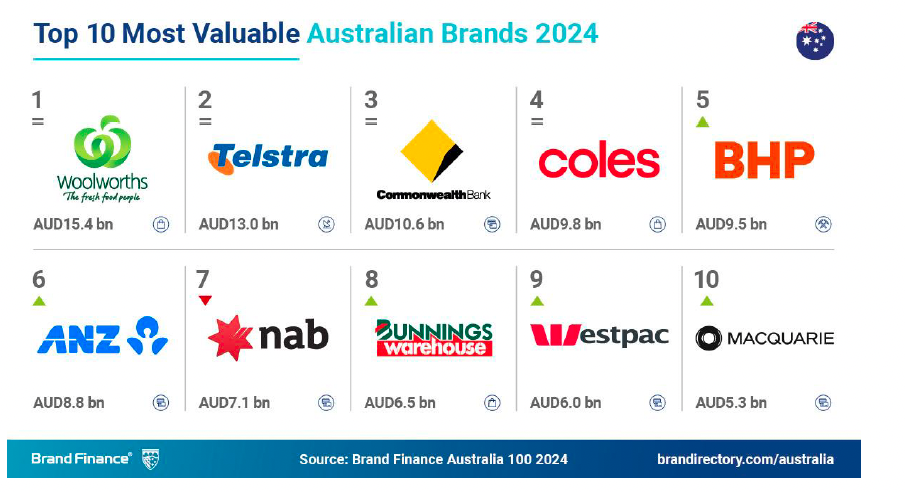The CDP hangover and the cure: How Australia’s post-pandemic customer data frenzy unfolded and where it goes next

What you need to know:
- Australia’s post-Covid CDP “bender” has entered a more measured phase after initially rushing into a promise of a single source of truth for customer data and its activation that promised a moat against shifting market and regulatory tides while cutting marketing costs.
- For brands and publishers, managing data silos, privacy compliance, and avoiding bill shock are top concerns, pushing companies to rethink how they fund and implement CDP solutions.
- Meanwhile the market has likewise shifted, both in terms of the constituent vendors, as consolidation ramps up, and their approaches.
- Versus standalone CDPs from big cloud vendors, composable systems – lighter, vendor-agnostic architectures that plug more easily into existing data and processes – appear to be on the rise at the mid and upper-mid tiers as brands seek more rapid returns, faster, for lower annual fees.
- But it may not be as simple as ‘either/or’ with data warehouses serving as the single source of data while CDPs serve as activation layers rather than centralised data hubs.
- Marketing cloud providers are adapting with firms like Adobe, Salesforce, and others integrating CDP capabilities into their broader cloud ecosystems, touting a hybrid approach between composable and traditional CDPs.
- Regardless of approach, building on use cases – and actually using them – is now critical to live up to the promise.
You need to stack usage of the CDP up—to use it enough to have enough use cases that the incremental gain of each of those use cases aggregates to an ROI on the total solution
Australia’s 2022-23 post-pandemic “CDP bender” is now facing a hangover as three-year contract renewals loom.
Customer data platforms promised a lot: the elusive single source of truth that feeds the rest of the martech stack, designed to help brands gain insights into target audiences and their behaviour, e.g. the types of products or services they are interested in, when they are most likely to make a purchase, and which channels they prefer to use, enabling automation of personalised marketing campaigns. Plus, helping brands and publishers slash acquisition costs by smarter use of first party data.
But as with all tech, everything is possible. It’s just not easy.
“A lot of companies have struggled to get a return from CDPs because it’s not plug-and-play,” one CDP leader told Mi3.
“There’s this assumption that you invest in a CDP and – boom – the money rains down. But in reality, it takes a lot of effort, and not everybody gets it right.”
That’s only part of the issue. The category itself matured at breakneck speed. “First movers had clear differentiation at the start, but then the market caught up. Now, buyers are looking around, thinking, ‘You all seem like the same thing. You’re all saying you can do the same thing.’”
That’s led to another existential question: why invest in a specialist CDP at all?
“Buyers are asking, ‘Why do I even need this?’ Maybe I can get what I need from [customer engagement platform] Braze, or from a marketing cloud provider like Adobe. Do I really need another standalone system?”
And then there’s the big gorilla in the room: customer data warehouses, led by the likes of Snowflake. This category has come on fast, and it’s forcing a rethink. “Snowflake and [cloud-based data analytics firm] Databricks have fundamentally changed the conversation. If my cloud data warehouse can handle customer data, do I really need a separate CDP? That’s what a lot of companies are now asking.”
It turns out there are a few quite good reasons – identity resolution key amongst them – but more on that later.
Asked for a CDP market temperature check, the overall picture Mi3’s local contact painted was this: “The market isn’t just evolving – it’s undergoing a structural shift. The technology is there, but so is buyer fatigue.”
The good news according to the customers Mi3 spoke with during Q1 2025 is that when business challenges are well understood and when programs are properly funded – including staffing capabilities – and when pricing models and drivers of cost like compute cycles and storage are well understood, and when all the right stakeholders are in the room right from the start the number stack up, and they can be impressive.
Quite the cocktail of caveats. Nevertheless, when Mi3 returned to the brands interviewed, two years ago, those that persevered universally reported that not only were original goals being met, but they were chasing new opportunities.
The bankable benefits included:
- Accent Group generating 4X its original business case estimate – though on its second race around the CDP hamster wheel.
- Nova Entertainment cut customer acquisition costs by 25-30 per cent while their rivals at SCA claim they have banked 60 per cent CAC savings.
- University of Tasmania achieved 20 per cent increase in email open rates, a 10 per cent improvement in unique click-through rates, and a 23 per cent reduction in unsubscribe rates, all of which fed into double-digit declines in cost per application.
- Compare Club, which opted into composable CDPs early, cut acquisition costs by 9.5 per cent – a big deal as marketing is its largest cost.
None of it was painless. In some cases promised functionality took years to arrive, in others, bill shock – i.e. spiralling unexpected costs from using the CDP – hurt relationships with vendors and damaged trust. Sometimes vendors changed strategy mid-course, forcing users to adjust.
Of firms Mi3 interviewed, none admitted to regretting their investments – though some acknowledged they would in hindsight have made other choices, given how the market has subsequently evolved.
But with hindsight, everyone has 20:20 vision. The relevant question is where the market goes next.
New models, rules, players
Composability – i.e. lighter, vendor agnostic modular systems that plug into pretty much anything and don’t require investment in a monolith system to handle everything – is on the rise. Meanwhile, IT is back in charge of the data architecture discussion, vendors like Oracle have existed adtech while still remaining in the core data analytics game, while others like Salesforce have doubled down putting their DataCloud at the heart of pretty much everything.
Simultaneously, new entrants have arrived down under – for instance companies like Klaviyo, the ecommerce customer engagement platform successfully wooing Shopify merchants, was only just testing the local waters when Mi3 mapped the market 2023.
The international market usually gives some signal as to where the domestic market might be headed next. So for the final chapter of this year’s CDP trilogy, Mi3 spoke with industry leaders around the world as well as local leaders and implementers to better understand the environment for new CDP investment decisions.
I do think that the promise of CDP being enterprise-wide has probably not quite lived up to expectation. And what we see, what I certainly see, is a proliferation of customer data management capabilities to support different subsets within a marketing stack.
Composable CDPs: Less plug, more play?
When Sitecore acquired Boxever in 2021, it wasn’t just buying a CDP – it was buying into a vision of how customer data should be managed. That vision, developed by Boxever co-founder Dave O’Flanagan, has evolved alongside an industry that has yet to deliver on its enterprise-wide promise. In fact, it appears to be in the process of a directional full flip.
Business data has historically been managed via process rules called exact, transform and load (ETL) – basically take all of a firm’s disparate data from various databases (extract), then clean it up so it can actually be read and used (transform) and pipe it into a data warehouse (load).
Now, as CEO of Sitecore, O’Flanagan sees the role of customer data platforms shifting. While traditional CDPs have played a significant role in data activation, he notes that brands are increasingly embracing composable architectures, where customer data is stored in their own warehouses – such as Snowflake, BigQuery, and Redshift – with CDPs functioning as a flexible activation layer rather than the “single source of truth.”
In other words, quite a few people are working out they may not need the CDP monolith that bundles in everything from data collection, storage modelling and activation – to but might be able to move faster and ostensibly cheaper via systems that plug into existing data repositories and activation practises.
“It certainly feels like the market is moving towards reverse ETL, [i.e.] storing the data in their own data warehouse and then having a CDP capability that either runs alongside and synchronises into that data warehouse or is able to query in place and gather the data, and then ship it to the end destination,” says O’Flanagan.
This represents a shift from where most CDPs, including Sitecore’s, originally started – with proprietary databases designed to centralise customer data. Instead, modern enterprise clients prefer to corral their first-party data themselves, relying on CDPs primarily for data acquisition and activation.
“The brands that we work with typically have Snowflake or a Google BigQuery or a Redshift capability. They want to master their first-party data themselves, and they see CDP as a data acquisition and a data activation tool,” he explains.
“That’s the way we view it in Sitecore.”
However, this doesn’t mean traditional CDPs are disappearing. Rather, they are evolving to fit more precise roles within organisations, particularly in industries where real-time personalisation, segmentation, and activation remain essential.
Enterprise-wide CDP: Undercooked?
While CDPs have long been marketed as the foundation of enterprise-wide customer data unification, O’Flanagan suggests this vision has been difficult to achieve in practice.
“I do think that the promise of CDP being enterprise-wide has probably not quite lived up to expectation. What we see, what I certainly see, is a proliferation of customer data management capabilities to support different subsets within a marketing stack,” he says.
The fragmentation isn’t just technological – it’s also organisational, he says. Different business units require different data strategies, making it difficult to centralise everything under one system.
“Trying to align three different parts of a business on a single tool is almost impossible.”
For instance, he says marketing automation needs batch campaign data, and web personalisation needs real-time intent. Those are fundamentally different data strategies, O’Flanagan notes.
As a result, many organisations end up deploying multiple customer data management solutions across their marketing, customer service, and sales teams rather than relying on a single, enterprise-wide CDP. That means duplication, and duplication means cost.
Despite the challenges of enterprise-wide deployment, O’Flanagan is clear that CDPs can drive significant ROI – but only when companies focus on the right use cases.
“If I go back, the use cases that we see matter [include] being able to synchronise first-party audiences into walled gardens like Facebook and Google and then to build their audiences from there. It’s about taking the data and making it available in real time so that you can influence personalisation based on historical data. It’s about synchronising segments into email marketing campaigns and driving those outcomes,” he explains.
This is where the standalone CDP market faces pressure. If a CDP can’t deliver better results than what’s already available within major marketing clouds (that includes Sitecore along with companies like Salesforce and Adobe), then its value proposition becomes harder to justify.
“There have been some interesting acquisitions lately. But honestly, a lot of them were fire sales,” he suggests. With large marketing platforms incorporating customer data management features natively, the market for standalone CDPs is becoming more specialised and use-case-driven.
The reason that Rokt decided to buy mParticle and not any of the 100-and-whatever number of other vendors that call themselves CDPs is because in that checkout moment, everything has to be real-time
Rokt’s $300 million bet on mParticle
Rokt which specialises in transaction optimisation, earlier this year spent US$300m buying mParticle, a prominent customer data platform (CDP) whose clients in Australia have included Nova, KFC, and Cashrewards.
The strategy underpinning the deal rests on the need to further enhance real-time data activation and better personalise customer experiences.
Rokt’s expertise lies in optimising the ‘transaction moment’ – the critical juncture when consumers are fully engaged, wallet in hand, says Michael Katz, mParticle’s new CEO.
“When you think about how people behave when they’re online, we’re all kind of half paying attention, half not paying attention,” he told Mi3. “The one exception to that is in the transaction moment, where you take your wallet out, and your credit card out, and then you basically block everything else out.”
He reckons this moment of concentration presents a unique opportunity for monetisation.
“What Rokt does is it has a set of predictive algorithms that ultimately determine what first- and third-party offers are going to have a complementary, non-cannibalising effect on the checkout flow, such that every additional dollar based on the services and products that they add on in that moment is 100 per cent margin to the partner,” claims Katz.
But that’s when everything is synched perfectly.
The data challenge
A recurring challenge in ecommerce is data sparsity – when advertisers lack sufficient data to inform algorithms it leads to suboptimal outcomes.
According to Katz, “When advertisers bring data to the table to allow their algorithms to learn, they get to value realisation so much faster. The alternative is they don’t really give any or have much data available, and then Rokt has to do a lot of guessing, a lot of trial and error. Sometimes it just doesn’t work.”
By integrating mParticle’s CDP capabilities, Rokt aims to streamline data onboarding, ensuring that advertisers can seamlessly contribute their data. Katz emphasised the importance of reducing friction in data access:
“The easier that Rokt can make it for its customers to be able to bring data to the Rokt network, the higher the likelihood is that they will be successful.”
This integration is poised to enhance the predictive accuracy of Rokt’s algorithms, leading to more effective customer engagements. So maybe a strategic $300m bet than a “fire sale” suggested by rivals.
“The reason that Rokt decided to buy mParticle and not any of the 100-and-whatever number of other vendors that call themselves CDPs is because in that checkout moment, everything has to be real-time. Our system was architected from the ground up for a world which has it fully outside of a set number of use cases and environments. But everything that we do is real-time. So when they were canvassing the market… there was only one choice for them.”
I will tell you that this issue has come up constantly. Where brands once asked, ‘Do we need a CDP?’ they are now struggling with a more complicated question: “How do I convince my stakeholders and IT and procurement that we need a CDP and that it will have a return on investment?
ROI: An ‘act of faith’
Forrester’s Joe Stanhope is blunt about the reality: “CDPs are expensive for what they are.”
Costs can quickly reach seven figures, making it difficult to justify the investment. “Nobody woke up and said, Hey, let’s build another warehouse!” he says. “You’re essentially adding a cost and a new line item for this technology on top of other things you’ve already got.”
That cost issue is compounded by the fact that CDPs don’t directly drive marketing performance.
“It doesn’t actually do anything,” Stanhope suggests. “It fundamentally moves data from A to B. It’s the classic software middleware problem.” That, he argues, makes buying a CDP “an act of faith” – the belief that “having more and better, faster data” will ultimately translate into better customer engagement and business outcomes.
The growing challenge for CDPs, according to Stanhope, isn’t just about whether they work – it’s about proving their value to stakeholders. “I will tell you that this issue has come up constantly. When brands once asked, ‘Do we need a CDP?’ they are now struggling with a more complicated question: “How do I convince my stakeholders and IT and procurement that we need a CDP and that it will have a return on investment?”
In theory, there are two key ways to make the business case for a CDP. “One is, does it create cost efficiency?” Stanhope says. “A lot of clients are doing this work today, but they’re doing it manually with a lot of people. It takes a lot of time. So can you automate some processes? Can you make moving the data around faster and easier? Get some better time to market on campaigns?”
The second argument is performance.
“In the long term, you need to ask: Does having more, better, faster data lead to better personalisation better email campaigns or better ad buys? Does that drive some kind of marketing KPI or revenue number incrementally over what you do today?”
But proving that value requires scale. “You need to stack usage of the CDP up, to use it enough to have enough use cases that the incremental gain of each of those use cases aggregates to an ROI on the total solution.”
The three-year build
The biggest mistake many companies make, according to Stanhope, is treating CDPs as a quick fix rather than a long-term strategic asset. “A lot of times, you’ll start seeing people buy a CDP, and they initially say, ‘We’re just going to improve our email marketing with a CDP,’” he explains. “That’s good. That’s a great place to start. There’s always a win in having better email marketing. People make money on email marketing.”
But then, they stop.
“They do two or three applications of the CDP, and then they stop growing it – and that’s not enough cumulative, incremental gain.” Instead, Stanhope advises brands to develop a structured, long-term roadmap. “I work with my clients a lot to say, ‘You need to have a three-year plan of incremental adding usage to the CDP so you can essentially use it enough to justify the business case.’”
Without that kind of roadmap, the risk is clear: brands invest in an expensive middleware solution without ever fully realising its potential. In any environment, that’s a tough sell. In today’s, it’s life changing (negatively, career-wise).
Zero-copy is, in some cases, more of a philosophy. It's not always going to be achievable.
Inflection point
What began as a race to aggregate customer data has now evolved into something far more sophisticated – integrated, efficient, and deeply strategic. Al least according to Tealium’s Chief Marketing Officer, Heidi Bullock, who sees a clear shift underway.
“The industry has moved beyond just collecting data,” Bullock told Mi3. “Companies are realising that first-party and zero-party data are their most valuable assets. But it’s not just about having the data – it’s about how efficiently you can activate it.”
That shift has fuelled the rise of cloud data warehouses like Databricks and Snowflake, which many businesses now view as their primary systems of record. The objective? Greater efficiency, more flexibility, and a streamlined approach to data management. Historically, marketing teams were tasked with managing first party data. Now, the responsibility is broadening across the enterprise.
Bullock says the CDP market is undergoing both consolidation and specialisation, pointing to several major moves in recent months: “Lytics was bought by Contentstack, ActionIQ was bought by Neustar, and mParticle by Rokt.”
This activity underscores a broader trend – cloud data warehouses are defining themselves as the new central hubs for customer data. That shift has also driven interest in composable CDPs and zero-copy architectures (literally where the data isn’t copied when it is transferred en route to wherever it’s headed, reducing compute power and cost) both designed to maximise efficiency while minimising data redundancy.
“Composable CDPs, in my perspective, are really reverse ETL – essentially the ability to extract, transform, and load data,” Bullock said, (but literally running in reverse order). “They allow businesses to move and activate data within their existing cloud warehouse environment, instead of relying on standalone CDP solutions.”
Zero-copy architectures take it a step further, eliminating data duplication by designating the cloud data warehouse as the single source of truth. However, Bullock cautions against overhyping the concept. “Zero-copy is, in some cases, more of a philosophy,” Bullock noted. “It’s not always going to be achievable.”
But ‘little bit of copy’ is perhaps less snappy.
Orchestration over aggregation
From Tealium’s perspective, the company has differentiated itself from pure data aggregators. “We have never, ever been a data aggregator,” Bullock said. “That isn’t what we do.” Instead, the focus is on real-time data streams and orchestration – capabilities that standalone reverse ETL solutions don’t fully address.
“Real-time engagement is critical,” Bullock emphasised. “Cloud data warehouses work well for audience lists and batch processing,” she said. “But here’s the key thing – they’re not built for in-the-moment engagement.”
That’s why Bullock advocates for a hybrid approach – one that blends real-time engagement with robust data storage. While traditional CDPs played an important role in aggregating customer data, she believes the future lies in deeper integration, balancing historical insights with real-time action.
As Bullock put it: “It’s not about collecting data anymore – it’s about making it work for you.”
Broadly speaking, we're seeing a tonne of traction for composable CDPs in the enterprise and in the mid-market and upper mid market, where they're pretty serious about their investment in data, and they want to get to the next level.
Whatever system they use, the onus is now squarely on marketers to build CDP use cases – and actually use them.
Hightouch co-founder Tejas Manohar says retail media is a burgeoning market, with composable CDPs helping brands build highly targeted audience segments, not just for marketing automation but also for monetising first-party data through a seeming mushrooming of media networks. The model is likewise spreading to financial services, travel, and other sectors where businesses need to refine audience targeting for advertisers – and where a slew of those businesses are piling into retail media-like owned media models.
The same challenges that marketers face with CDPs – audience segmentation, data activation, and personalisation – apply to media networks, but with added complexity says Manohar, adding that flexibility and the ability to incorporate data science models become crucial.
Composable supposables
Manohar argues that brands that once banked on platforms like Adobe CDP or Tealium are increasingly making the shift to composable CDPs, but the transition isn’t always straightforward. Some are running both systems in parallel as they chart a migration path, while others opt for an immediate switch.
“Broadly speaking, we’re seeing a tonne of traction for composable CDPs in the enterprise and in the mid-market and upper mid-market, where they’re pretty serious about their investment in data, and they want to get to the next level.”
But while some Australian CDP users – including Nova and some of the state tourism boards – are interested in a possible composable switch, most of the customers Mi3 spoke with are more focused on leveraging current investments alongside possible composable enhancements.
Perhaps unsurprisingly, standalone CDP providers like Adobe and Salesforce agree with the latter strategy.
For the most part, the greatest power in Customer Data Platform's as we see it, lies in the activation layer—your ability to create meaningful audiences that drive effectiveness and execute them across any required system.
¿Por qué no los dos?
Rather than butting heads with composable vendors directly, martech incumbents are banking on their customers seeking to cherry-pick the best of both words.
Gabbi Stubbs, APAC Head of Product Marketing & Strategy, Data Management & AI at Adobe, acknowledges the growing importance of customer data warehouses and data lakes, and argues that Adobe’s CDP approach blends easily into this approach..
“For the most part, the greatest power in Customer Data Platforms as we see it, lies in the activation layer – your ability to create meaningful audiences that drive effectiveness and execute them across any required system.
“[If] I already leverage Snowflake and want to bring it in, I see significantly more value in my audience when all these elements come together – not just the known information, but also past buying behaviours or even sensitive data like credit scores. Having that full picture helps determine the next best action,” says Stubbs.
“We leverage what we call federated audience composition, meaning you can integrate and utilise data from other sources – whether it holds higher utility, contains high-value audiences, or includes more sensitive information.”
This approach, she says, lets brands enrich and scale audiences or individual profiles more effectively. “It’s about extracting value rather than duplicating existing data from your warehouse or data lake, ensuring that value is brought into the profile for activation. Ultimately, it gives you the flexibility to shape your approach as needed.”
Salesforce, meanwhile has put its CDP at the heart of its Data Cloud strategy. Forrester’s Stanhope says it’s best to conceptualised Salesforce Data Cloud as an enterprise data warehouse.
“It started as a CDP and then evolved into the broader Data Cloud we know today. It’s a singular product with multiple pricing models. There is a CDP-specific variant for those who need pure CDP functionality, but for most large customers, Salesforce is positioning Data Cloud as the foundation for Agent Force, AI processing, and workflow automation. If you want to do advanced data work across the Salesforce ecosystem, Data Cloud is now essential.”
According to Salesforce’s ANZ Chief Marketing Officer, Leandro Perez, Data Cloud surfaces everything within Salesforce, but it also connects to external systems without needing to copy or import data. “Whether it’s in Snowflake, Databricks, or a custom system, Data Cloud operates on a ‘zero-copy’ model. We’ve built the Zero Copy Network with key partners, giving CIOs control over data access.”
Previously, marketers could only see their slice of data in Marketing Cloud or a competing product, he says. “Now, by connecting to Data Cloud, they – and everyone else – gain full visibility. Sales can see marketing data, service teams can see marketing data – it’s a real unlock.”
CIOs appreciate this, he says, because they retain control while enabling broader access.
Our conversation with clients goes, 'if you can get all your customer information in the one spot, we can probably save you 20 per cent on your media costs'.
Show me the money
Whichever technical and architectural approach organisations take, ultimately it comes back to the dollar earned for the dollar spent, says Audience Group’s Director of Data Analytics & Operations, Damon Mudge.
He tells Mi3 that ultimately CDPs should be judged on their ability to reduce media waste and improve business efficiency, not simply on their technological capabilities.
“Our conversation with clients goes, ‘if you can get all your customer information in the one spot, we can probably save you 20 per cent on your media costs’.”
Mudge says this shifts the traditional narrative around CDPs away from technological prowess, and centres its on measurable cost savings and efficiency gains. “The conversation about investing in the technology becomes a lot easier when you’ve got a use case with an ROI against it. So rather than trying to think about it at technology level, you’ve got to think about at the business level.”
He also flags a concern raised by brands in earlier conversations about managing the cost side of CDPs – mitigating against bill shock and cost blowouts. He says structured cost management is essential, and he also notes – as did brands Mi3 spoke with – the current superiority of cloud data warehouse solutions on this front, because many allow clients to set credit limits on usage before it becomes an operational problem.
Failure to understand the drivers of cost is another potential bill shock catalyst says Mark Jobbins, Chief Technology Officer, APJ for storage architecture vendor, Pure Storage. By way of example, he highlights the financial impact of brands unintentionally creating silos of data across multiple point solutions, each tailored to specific applications – burning through compute power and credits.
“This fragmented approach leads to significant inefficiencies and inflated expenses,” he says. “The primary cost driver is having different storage technologies and multiple copies of the same data,” says Jobbins. “If you can’t effectively share and process data, the costs grow exponentially.”
Hence the appeal of zero-copy approaches.
A final trip wire
Data silos do more than complicate access to data. They also create a foundational problem for many CDP implementations, says Civic Data’s Chris Brinkworth – determining where the money comes from to pay for the often extensive work required across the organisation.
“The privacy team doesn’t understand marketing, and the marketing team doesn’t understand privacy. That gap is a big issue.
“So there’s another critical aspect to this conversation: who owns privacy-related investments? I’ve spent the past year focused on this – figuring out how to sell privacy solutions and identifying the right buyer. Should consent management or an audit of every single tracking pixel come from the marketing budget? The IT budget? The privacy budget?”
This isn’t just a compliance issue he says. “It has a material impact on past, present, and future technology investments, as well as future media and advertising spend. If you can’t properly target or measure, the ripple effect touches everything. In my view, this should be a capex not an opex discussion, which means CFOs also need to be involved.
“Marketers care, but they often don’t have the budget or resources to fix these issues alone. The businesses navigating this best are the ones where privacy, legal, IT, and marketing leaders work together as a unified team.”





